|
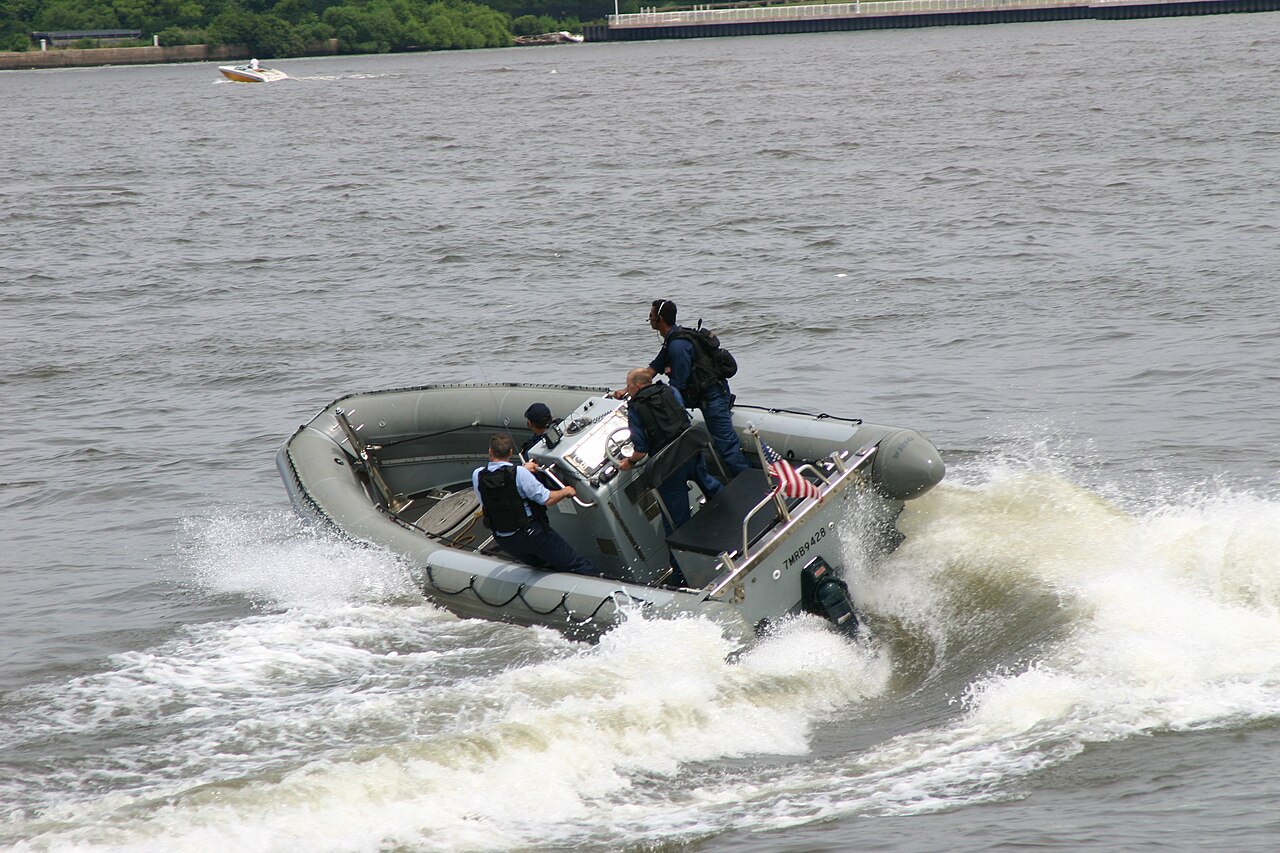
A
US
Navy RIB with a single inboard engine and Z drive
A rigid inflatable boat (RIB), also rigid-hull inflatable boat or rigid-hulled inflatable boat (RHIB), is a lightweight but high-performance and high-capacity boat constructed with a rigid hull bottom joined to side-forming air tubes that are inflated with air to a high pressure so as to give the sides resilient rigidity along the boat's topsides. The design is stable, light, fast and seaworthy. The inflated collar acts as a life jacket, ensuring that the vessel retains its buoyancy, even if the boat is taking on water. The RIB is an evolutionary development of the inflatable boat with a rubberized fabric bottom that is stiffened with flat boards within the collar to form the deck or floor of the boat.
RIBs are commonly four to nine metres (13 to 28 ft) long, although they can range in length between 2.5 and 18 metres (7.5 and 55 ft). A RIB is often propelled by one or more outboard motors or an inboard motor turning a
water jet or stern drive. Generally, the power of the motors is in the range of 5 to 300 horsepower (4 to 224 kW).
USES
RIBs are used as rescue craft, safety boats for sailing, dive boats or tenders for larger boats and ships. Their shallow draught, high maneuverability, speed and relative immunity to damage in low-speed collisions are advantages in these applications.
RIBs up to about seven metres in length can be towed on trailers on the road; this, coupled with their other properties, is making them increasingly attractive as leisure craft.
PERFORMANCE
RIBs are designed with planing hulls. Due to their low weight, RIBs often outperform some types of similarly sized and powered boats.
RIBs can also generally cope better with rougher seas, although this may be partially due to an increased level of confidence in knowing that a RIB is hard to sink, and better absorption of heavy loads by the flexible tubes, which therefore make heavy seas less unpleasant.
The maximum speed of the RIB depends on its gross weight, power, length and profile of hull, and sea conditions. A typical seaborne 6-metre (19 ft 8 in) RIB, with six passengers, 110 horsepower (82 kW) engines, in Beaufort force 2 is very likely to have a top speed of around 30 knots (56 km/h). High-Performance RIBs may operate with a speed between 40 and 70 knots (74 and 130 km/h), depending on the size and weight.
In the 2010s, the traditional RHIB was reimagined using High-Density Polyethylene (HDPE) as the hull material. HDPE, an engineered polymer, possesses a number of properties which make it a superior marine construction material for RHIB's. Of note, it absorbs vibration leading to a quieter, more comfortable ride, with less slamming load transferred to operators. HDPE does not corrode, or suffer from
electrolysis, reducing maintenance costs and increasing operational availability.
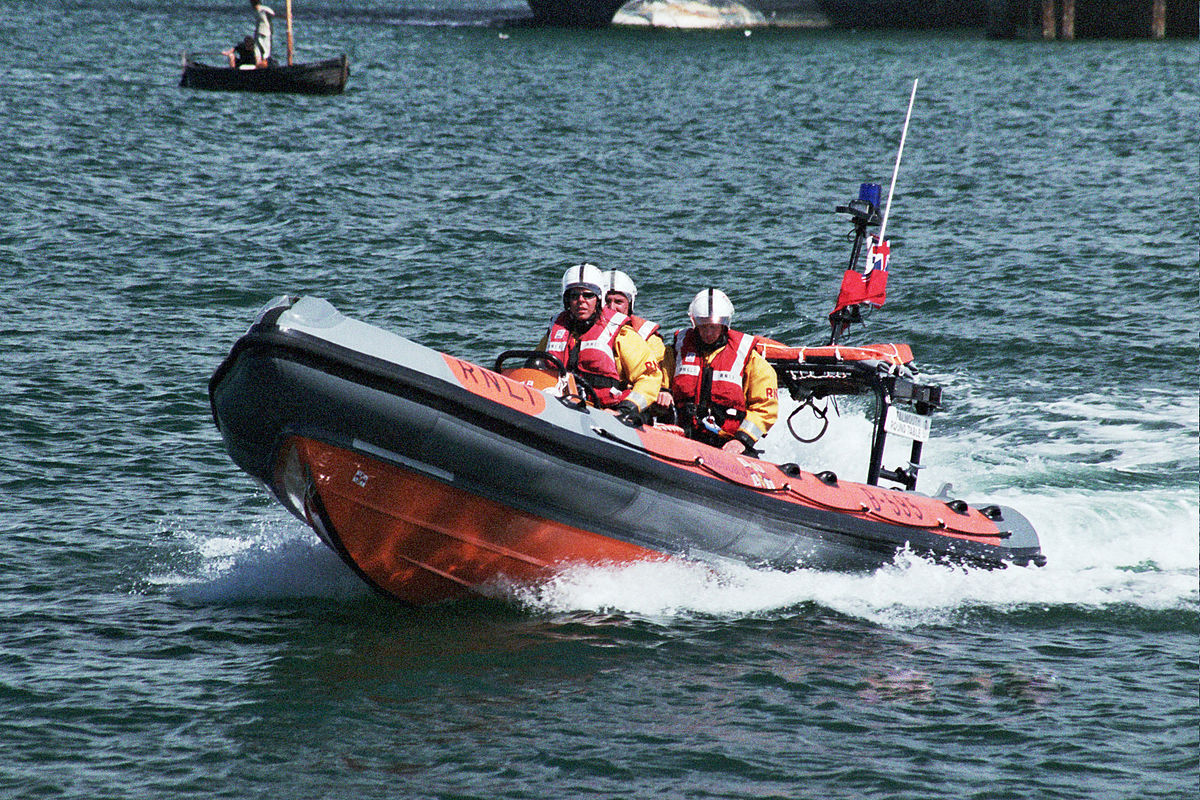
The
RNLI pioneered the use of fast and light rigid inflatables
CONSTRUCTION
The hull is made of steel,
wood, aluminium, or more commonly, a combination of wood for the structure and glass-reinforced plastic
(GRP) composite for the shaped and smooth surface. Some manufacturers also weave
Kevlar into the
GRP sheets for extra strength. The hull of a RIB is shaped to increase the performance of the boat in the water by optimising its hydroplaning characteristics. "Deep-V" hulls cut through waves easily but require greater engine power to start planing than "shallow-V" hulls, which plane at lower speed but with a more uncomfortable ride. As with the design of most boat hulls they represent a compromise of different design characteristics. Modern "all round" RIB hulls combine a deep v hull at the bow which flattens out to present a broad planing pad. This is a flat area on the rear of the hull designed to allow the boat to have a stable surface to plane on.
Tubes
The tubes are usually constructed and then partitioned with separate chambers to reduce the effect of a puncture, each with a valve to add or remove air and more recently pressure release valves. Larger boats (7m+) have six or more chambers with a valve and pressure release for each chamber. If only one of these chambers is punctured, the rest of the chambers will still provide buoyancy, providing redundancy. In recent years, tubes tend to be fitted with both valves and pressure relief valves. As temperature increases, the air inside the tube expands, opening the pressure release valves. This prevents the tubes bursting from overpressure. Common materials for the tubes are Hypalon and PVC (Polyvinyl chloride), though some manufacturers use PU (Polyurethane).
Hypalon
Chlorosulfonated Polyethylene (csm) is registered under the trade name 'hypalon.'
Tubes made of hypalon (csm/cr) are easy to manufacture and can be repaired with simple puncture repair kits. Hypalon
(csm) is not airtight and so must be combined with neoprene (cr) when used to build tubes. Tubes made with Hypalon and Neoprene layers can last up to twice as long as PVC tubes and have been known to last over 20 years. Hypalon is probably the most popular material used for the construction of RIBs manufactured in the UK.
Polyvinyl chloride
As a material for building tubes, polyvinyl chloride (PVC) has the disadvantage of lacking flexibility. To make it supple, an additive is used with the polymer. This additive vaporizes as the material ages, making the PVC brittle and allowing it to crack. A PVC tube is the cheapest option and can last approximately 10–15 years.
PVC does have some advantages, it is cheap, it can be welded, and it is guaranteed for longer than
hypalon. PVC RIBs are usually very well made and with welded seams they are less prone to blowouts and leaks.
A newer form of PVC has made its way into production. Known as valmex it is said to have a blackout layer on the inside to reduce UV damage to the adhesives usually used to fix tubes to the hulls and various other parts.
Polyurethane
Tubes made of polyurethane
(PU) are difficult to manufacture and are consequently not often used for RHIB construction. PU has an advantage of being very tough, it can be made knife-proof or bulletproof. Earlier PU had a disadvantage of aging quickly, but newer types are much more resistant to degradation when exposed to ultraviolet-light. The issue with most of the older PU built RIBs is theUV rays and heat penetrate the fabric and, much like with PVC, destroy the adhesive bond. More recent fabrics are said to have a blackout layer to help combat UV rays.
While PU tubes have been thermal welded, fittings and attachments will still usually be bonded using adhesives. A high-quality
PU-made tube lasts over 20 years. PU tubes are often to be found on commercial
RIBs, in applications where strength and durability are needed. Replacing the tubes when they wear out usually costs one third as much as the complete RIB.
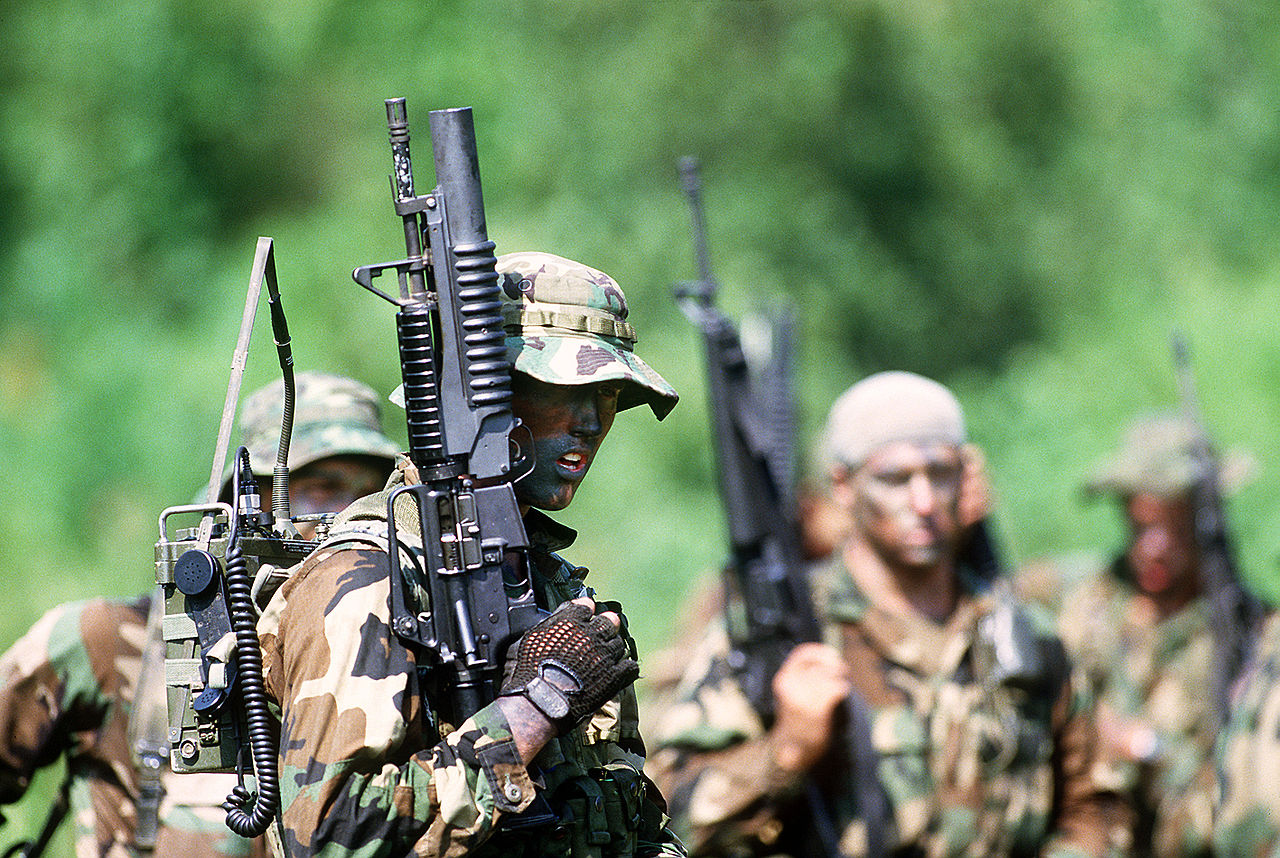
SEALs
- Special tactical warfare training are known to use RIBs in operations
HISTORY
The combination of rigid hull and large inflatable buoyancy tubes had been conceived by a
Royal National Lifeboat Institution
(RNLI) team working under Inspector of Lifeboats Dag Pike in 1964 as a means of reducing the wear and tear of the fabric bottoms of the existing inflatable inshore lifeboats. Although working versions were built, the plywood rigid hulls were not strong enough and broke up in waves.
Development of the RIB was originally undertaken by students and staff at Atlantic College in South Wales, under the direction of retired Navy Admiral Desmond
Hoare, who headed the school, which opened in 1962. A series of experimental and prototype solutions for effectively combining a hard hull form with an inflated fabric sponson lasted for over a decade. The RIB craft developed at Atlantic College served as an effective seafront activities safety and rescue boat for the college's fleet of sailing dinghies on the often challenging Bristol Channel, and the college went on to become an Inshore Lifeboat Station for the RNLI in 1963, carrying out countless rescues over the next 50 years.
The RNLI's "B-Class Atlantic Inshore Lifeboat" (including the Atlantic 21, the Atlantic 75, and Atlantic 85) was named in honor of the college's role in its development. The Atlantic College Lifeboat Station was decommissioned by the RNLI in 2013. The video RIB History at UWC Atlantic College provides a visual historical summary.
In 1964, Rear-Admiral Hoare and his students at Atlantic College replaced the torn bottom of their 12 ft (3.7 m) sailing activity rescue inflatable boat with a plywood sheet glued to the inflatable tubes. This proved a successful modification but was rather uncomfortable at speed offshore, and so the hull was rebuilt with a
shallow-vee bow entry transitioning to a nearly flat section stern. This boat was named Atlanta and later that year an Atlantic College RIB was displayed at the London Boat Show.
By 1966 the students had built a further five rigid inflatable boats – the 15 ft (4.6 m) Aphrodite and 16 ft (4.9 m) Triton for the college's own use, and the 16 ft (4.9 m) X1 and 22 ft (6.7 m) X2 which were made under a development agreement with the Royal National Lifeboat Institution
(RNLI) and were launched in 1965 by Queen Elizabeth
II. They were taken by the RNLI for trials at Gorleston (X1) and Great Yarmouth (X2) from which they returned to Atlantic College in Spring 1967. X3 was an experimental vortex-lift hull funded by a private developer and was not greatly successful.
By that time Hoare had concluded that for the conditions under which they operated a boat of around 18 ft (5.5 m) long was optimum which led to X4 (launched 1966), X5 and X6 (launched 1967), and X7 to X8 (launched 1968). These boats were used to support the college's sailing activities and also to fulfil the college's responsibility as an inshore lifeboat station for the RNLI – a responsibility it discharged up until 2013. At the same time, work started on a smaller series of
beach-launchable boats, 10 ft (3.0 m)–12 ft (3.7 m) ft long, designated MX1–MX6) to support lifeguards on local beaches.
All the above boats’ hulls were built from plywood. In summer 1968, student Paul Jefferies designed and constructed a hull (X10) from fiberglass, which was not a success due to lack of strength. However, that development led to the building of Psychedelic Surfer, a
twin-engined 21 ft (6.4 m) RIB, for John Caulcutt, Graeme Dillon and Simon de’Ath to race in the 1969 Round Britain Powerboat Race, in which it was one of the few boats to finish.
From that time, the RNLI transferred development to its research centre in
Cowes, who took the Atlantic College designs and developed from them the 21 ft (6.4 m) Atlantic 21 class of inshore lifeboats which entered service from 1970 through 2007. Atlantic 21-class lifeboat provides a class history of this vessel.
The first commercially saleable RIB was introduced in 1967 by Tony and Edward Lee-Elliott of
Flatacraft, and patented by Admiral Desmond Hoare in 1969 after research and development at
Atlantic College.
The first commercial RIB is believed to be the Avon Rubber Searider which was launched at the January 1969 London Boat Show.
The 108th Engineering Heritage Award by the Institution of Mechanical Engineers was presented to UWC Atlantic College on 30 July 2017 by Carolyn
Griffiths, President of the IMeche, for its development of the X Alpha Rigid Inflatable Boat.
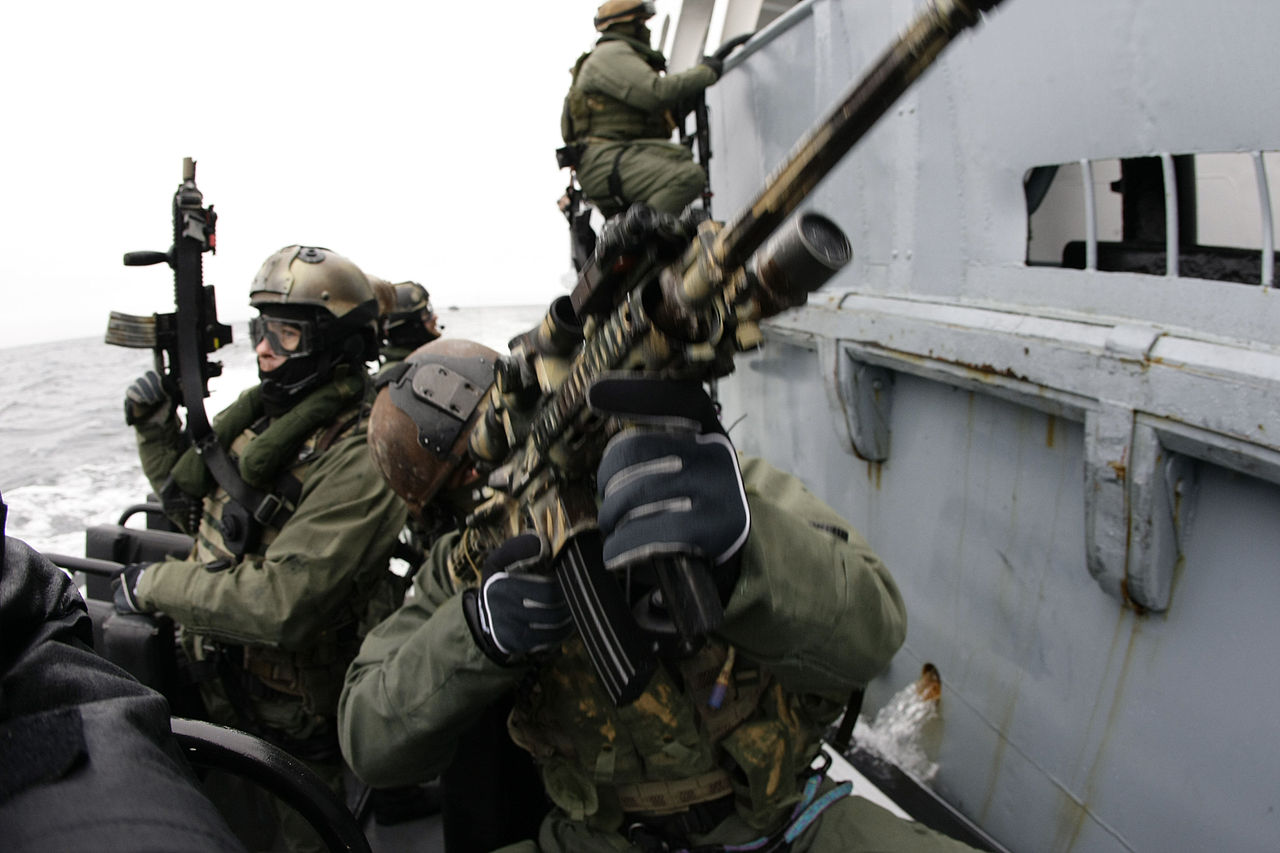
SEAL naval warfare boarding skills
BUYING TIPS
A rigid inflatable boat in the present world is well shaped in such a way that it can maintain its buoyancy even when it has tapped some water due to unfavorable weather conditions. Nearly all the boats in this category can give you a chance to perform an assigned duty, but not all can fully fulfill your purpose. This calls for some wisdom when it comes to purchasing a rigid inflatable boat. To end on the best boat for this matter, here are some of the most critical factors that you should bear in mind when buying your boat.
WHAT IS YOUR PURPOSE
You should ask yourself if you are going to use it for fishing, for diving, racing or for carrying your family members. The intended use will lead you to the best boat. For instance, if you need it for family purposes, you might have to check for a size which can well fit your family members. If you are few, a small RIB will be favorable for you. However, if you have a larger family, you will need a relatively more significant RIB. Additionally, if you are going to have it for racing, which can be very fun, you will have to check on the capacity of its engine. The engine will determine how fast the boat can cruise. It can be heartbreaking to register for a racing competition when you know very well that your ship cannot go more quickly. Understanding your purpose will lead you to buy a RIB which can perfectly serve the purpose.
FREQUENCY OF USE
You also need first to know how many times are you most likely to use the boat per year. This will help you in understanding the quality that you need. If you are going to restrict its use on only specific occasions of the year, you should outweigh the needs and the time related to the cost. It could be more interesting to charter a RIB instead of buying one. For the price of a RIB you can charter many, many times.
If you are going to use it as frequently as you feel like, then other things come into the picture. How much luxury do you want? How strong must it be? The region of navigation is also a very important factor. I’ll come back to that here below. You could say that the stronger, the tougher the RIB, the more expensive it becomes. It’s not crazy to say that that RIB is the obvious choice. So it’s better to go for the expensive one so that you can enjoy its more extended service than taking a cheaper one then going back to the market to buy another one after a certain period.
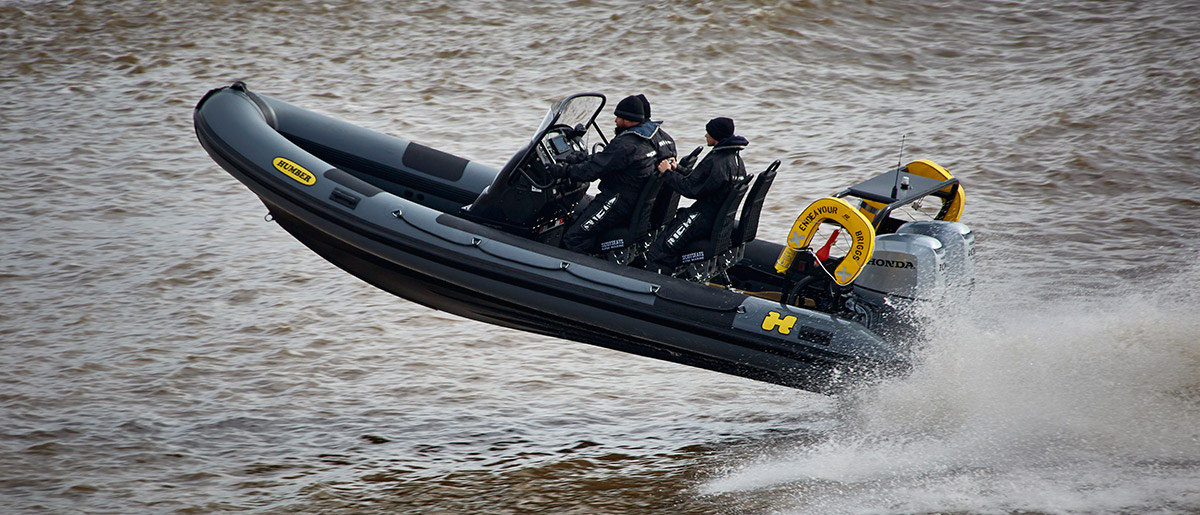
A
twin engined RIB with a three person crew
NAVIGATIONAL REGION
The part of the water that you want to ride the boat also should be a factor to consider when buying one. For instance, if you are planning to have it majorly on the still and calm waters like inland waterways, lakes and coastal areas, then you can go for wide body. This is because, in such waters, the boat will not face any form of disruptions by the weather. In essence, it will always be stable. However, this will not be the case when you are planning to use your boat in the challenging
waters like the open sea. I did some research and for instance the
North Sea has these averages (source: Maritime Research Flemish Institute for the
Sea):
Windspeed:
Metres per second: 9.00
Miles per hour: 20.13
Kilometres per hour: 32.40
Knots: 17.49
Beaufort wind scale: 5: Fresh breeze
Direction: mostly SW (265°)
Waves:
Height along the coast: 1,3 m (peeks of 5 m, highest 34 m!)
Frequency: 3-4 seconds
Temperature:
Summer: 17°
Winter: 6°
With such conditions, you will need a boat which is stronger and can withstand the stressful weather. You should check these data for your preferred region of navigation before going out to buy a RIB. So what is a good RIB for such conditions? The answer is that the hull is the most important part is of your RIB to be. Far more important than the colors and deck lay-out.
CHOICE OF ENGINE
Do you need an inboard or an outboard? The engine you choose will determine how fast you will go with your boat. Nowadays you have a choice of
gasoline and
diesel engines. Forget the electric engines for these are not suited to power a RIB of 5 m.
Outboard motors weigh less than inboard engines. Some rigid inflatable boats are fitted with two engines or more which can be engaged in different conditions. The type of engine you will need determines the boat that can meet your demands. Do not just buy any engine then get surprised when
it does not have enough power, or uses a lot of fuel. Ensure you make the right choice before you buy your boat. And do check the maximum power the RIB allow to have installed and absolutely never cross that border no matter what others say! The insurance will refuse to pay up in cause of an accident when you exceed that maximum.
There are also electric outboards, but these are probably not as
powerful at time of writing.
HOW FAR ARE YOU GOING ?
What distance are you planning to cover every time you are on your boat? If you are to cover a long distance, see to it that your fuel tank is large enough. At least 200 liters and more depending on the consumption of your
engine. So do ask for
specific performance data and remember that that these figures were
probably recorded ‘in a lab environment’. If you are using you RIB for
fishing along the coast you might not talk about
exact miles. If you think that you will be covering a long distance, then you
might want a fast engine to get you home quickly when the weather
changes. It's a good idea to have an extra jerry can on board filled with fuel. For yourself in the first
place but also to help out a fellow navigator.
BUYING A TRAILER
If you’re going to take your RIB on the road you will need a solid trailer.
They cone in all sizes. Some have a single axle and others have three. Think of the trailer as
protection for your investment. The specs of a trailer are being defined by the length, the width and the
carrying weight. You will need to have a trailer to launch your boat off a ramp. Some trailers are built in
stainless steel and have waterproof lights. Vanclaes is a company that builds customized trailers in stainless steel the way you
specify.
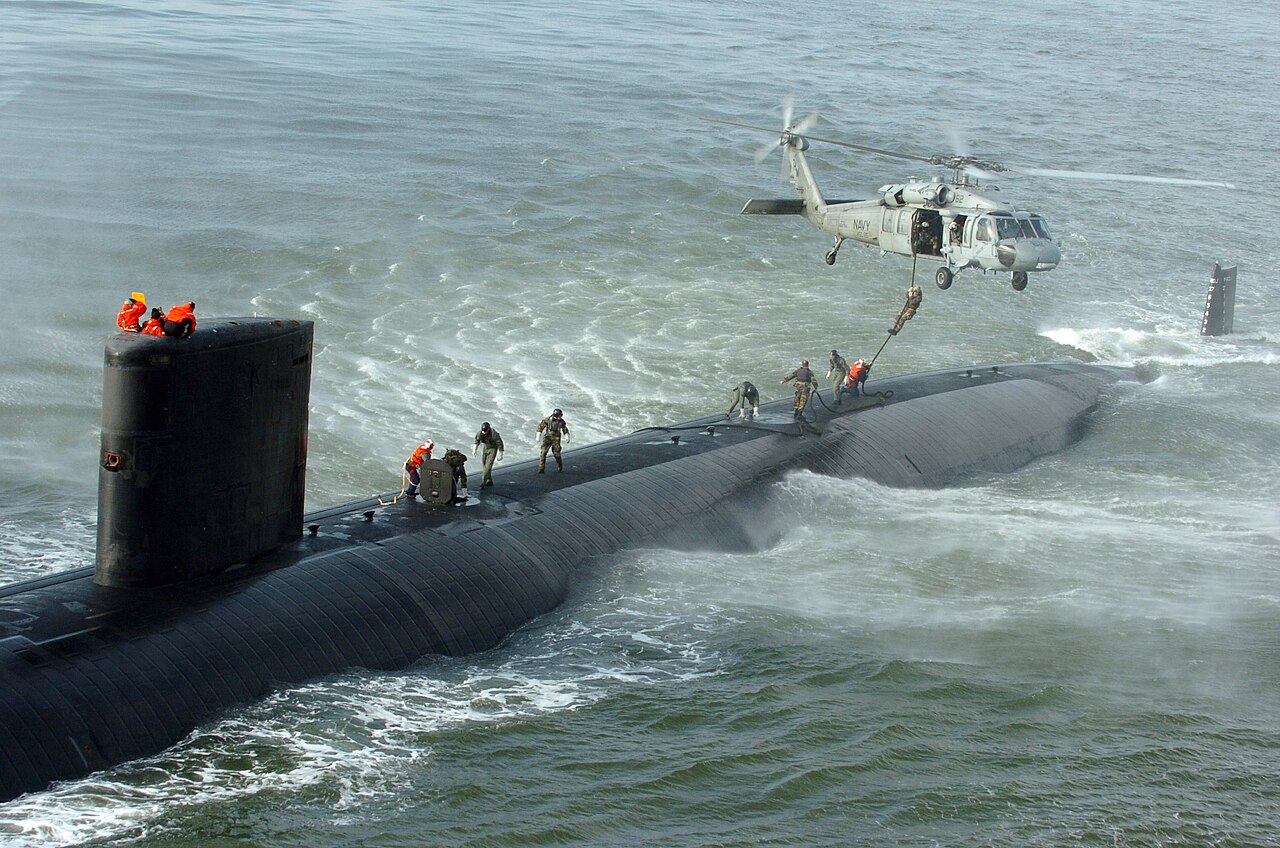
Fast
roping from a Seahawk helicopter to the USS Toledo nuclear powered submarine.
In this John Storm adventure, a Virginia class attack submarine is used
to deliver the rescued hostages to various safe locations. With a RIB
involved in getting off the shore to the Elizabeth Swann, and then out
of the Arabian
Sea. It would be far too risky transferring mature politicians by
helicopter and rope.
WORLD
WAR THREE
In
the event of an international nuclear holocaust, World
War Three will wipe out the White House and most of Washington CD.

CHAPTERS
| CHARACTERS
| MEDIA
|
MOVIE REF |
SCREENPLAYS
|






